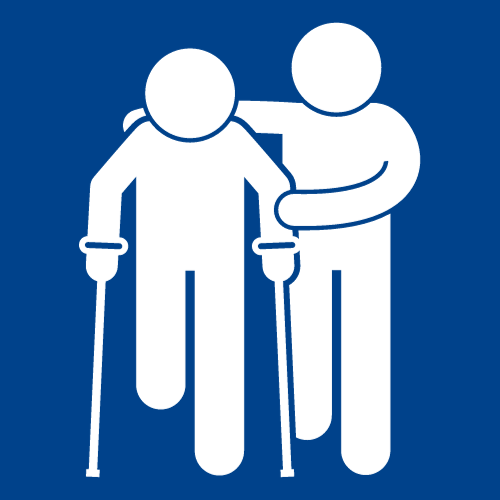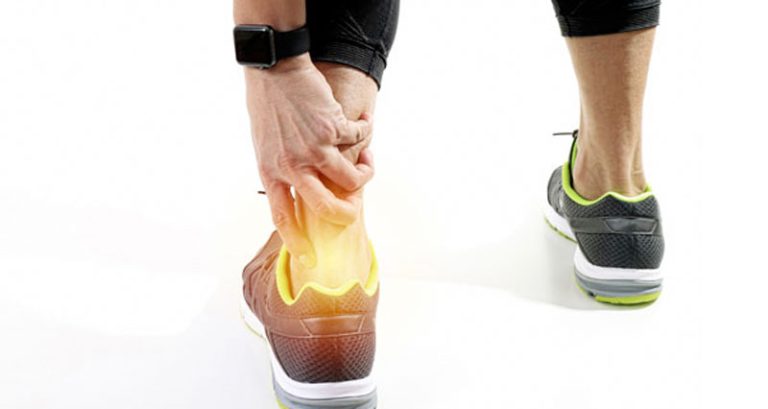So I was visiting a referral clerk at a busy orthopedic practice in my local area and discovered she was suffering from a knee problem that was scheduled for arthroscopic surgery. I offered my services to her either pre operatively to possibly avoid this pending procedure or post operatively to aid in a full recovery.
The clerk stated she has already been in PT at the orthopedic practice’s own PT facility and it was not helping.
She expressed interest in working with me after her surgery, so I urged her to start as soon as possible to assure the recovery was uncomplicated. I wished her luck, and we parted ways.
About 6 weeks later I get a phone call from this clerk stating she had her knee surgery about 3 weeks ago.
She was still in a lot of pain, and she was ready to start post-operative PT. I was thinking to myself, did she not get the message about starting as soon as possible? I held my tongue and graciously agreed to see her right away. When she arrived, I observed a very stiff knee with significant gait disturbance and quadriceps atrophy. Her ROM was lacking about 10 degrees of full extension and was about 70 degrees of flexion. Of course, pain was produced with movement into these restricted movements.

I began explaining to her about the healing process after trauma and the need to start moving the injured and healing tissues to promote a stronger and more flexible scar.
I explained to her that the therapeutic movements typically will produce pain when the healing and abnormal tissue are stretched or contracted, but the pain should not get worse with repetition or last more than a few minutes after completing the movements.
She understood and we began gently moving this stiff knee.
We initially began with active knee extension in sitting and passive knee extension in standing which she reported seemed to actually become less painful with reps. I took that as a good sign and sent her home to work on these movements about 4-6 times daily.
She came back a few days later with improved gait and significantly improved ROM, no loss of extension, and minimal loss of flexion (0–110). We proceeded with that session by adding step-standing knee flexion to restore the last bit of ROM. This was also tolerated well. She came back a few days later, still improved, and now had a normal gait and full knee ROM. This session, we began to explore her functional strength loss with bilateral stance squatting and step exercises.
These movements were difficult and provoked quadriceps fatigue but no pain. So we added these activities 1 time daily to restore strength/function.
We progressed with these activities over three more sessions with good tolerance and further improved function. After the sixth session, she mentioned she was to follow up with her surgeon’s PA the following week. I said okay and thought the amount of progress made in these few sessions might impress this PA.
The following week I get a message from the patient. She informs me that her PA wants her to stop PT. He tells her that her therapy should not provoke any knee pain, and convinces her to undergo a series of injections into her knee to attempt cartilage regrowth.
I was reading this message and thinking WTF? So less than 6 weeks ago they tell this poor lady she needs surgery to remove torn cartilage in her knee, and now they convince her that she needs injections to regrow cartilage that they just removed? What kind of BS is that? Clearly this patient had improved from surgery to follow up. Does this PA not assess reported pain and function in his follow ups? What type of physiology courses are taught in PA school? Did they skip the section on soft tissue repair process? Has this PA ever personally recovered from a trauma or surgery to a body part that is vital to movement?
At Stover PT in Oklahoma city OK, I have been working with orthopedic injuries for over 20 years and I cannot remember 1 patient who went through the entire rehab process and recovered fully without experiencing pain.
Pain is not always a sign that tissue is being damaged. The idea that pain should be avoided at all costs often leads to maladaptive pain behavior such as kinesiophobia (fear of movement). This type of behavior should be discouraged as it frequently encourages the development of crippled mindsets often seen in the chronic pain population. This type of maladaptive behavior has been the culprit of many disabilities.
Pain and changes in the affected body parts ROMs are used as a guide by rehab professionals to determine appropriate treatment strategies following musculoskeletal injuries, such as post-operative trauma following knee surgery. Many rules and clinical reasoning guides have been devised and taught to rehab professionals over the last few decades regarding pain. The traffic light guide and the soreness rules are just a few that I employ as guides during patient care.
So if your physician or physician’s PA tells you that exercising your injured body part should not be painful, ask them if they have experienced such injuries personally?. Ask them if they felt pain when they were recovering from these injuries. More importantly, ask them: did they fully recover? If they did not fully recover,encourage them to see a PT. PT might just fix their problem; although pain may be experienced, harm will not occur.






